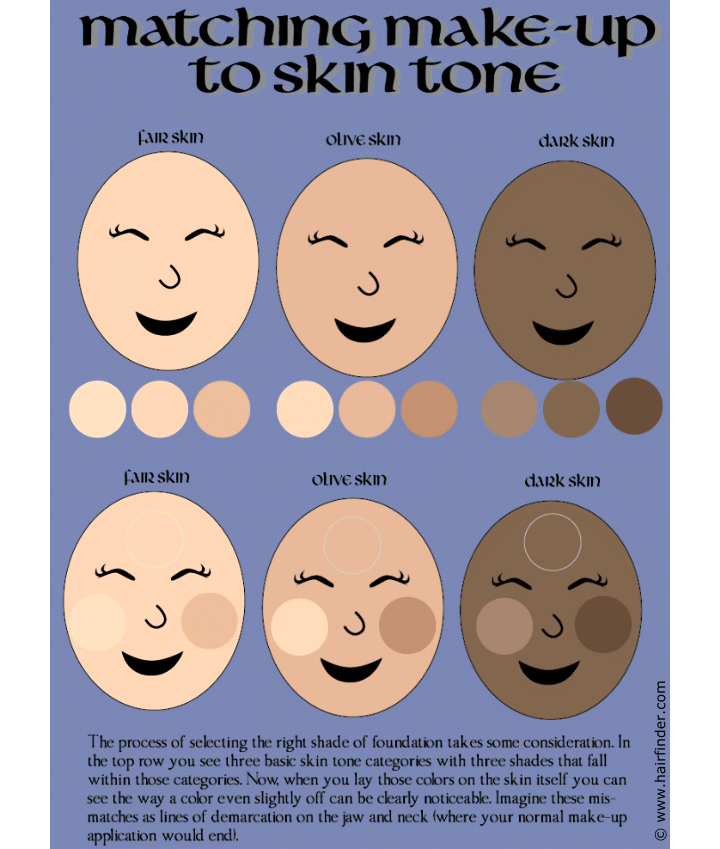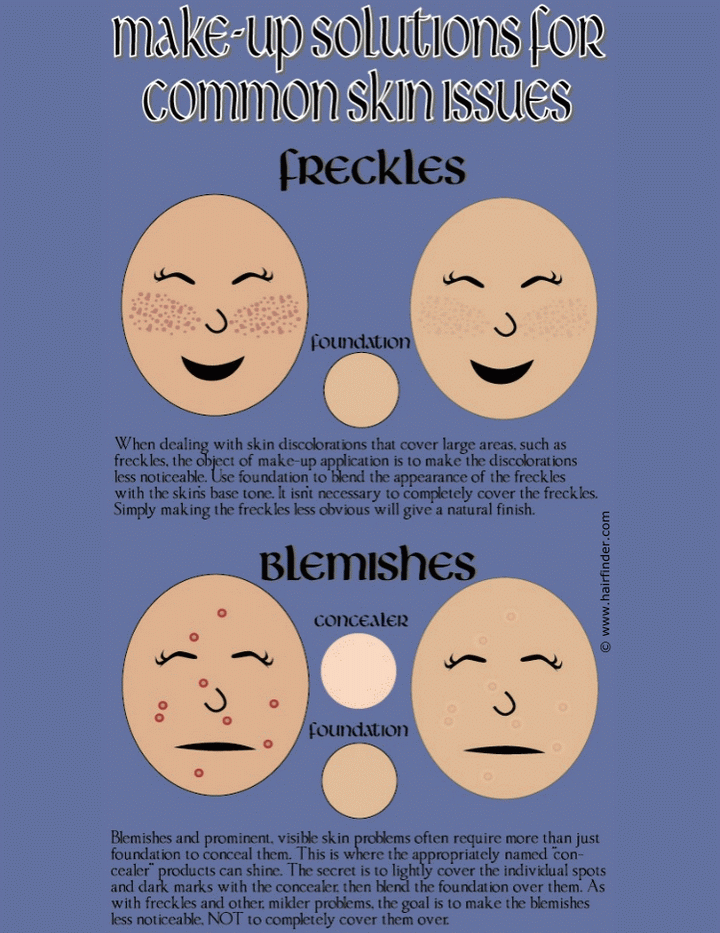Foundation Make-Up
While the use of foundation make-up is pretty straightforward, some women have a difficult time achieving an application that looks natural. They often select shades of foundation make-up that are in a tone that they “want” to have rather than trying to carefully blend with their real skin color. Some think that by going slightly darker than their natural shade they can create a “tanned” appearance or cover up minor discolorations or blemishes.
There is also the matter of selecting the right foundation formulation for your skin. This means choosing a type of foundation coverage that will work with oily, dry or normal skin. The goal is to help it look healthy and soft and create an even canvas from which to form your make-up look. Let’s talk about these options in formula and who they work best for.
Foundation Formulae:
Liquid or Cream Foundations include many of the formulas you may have used for years. It also includes things like tinted moisturizers. Liquid and cream foundations are perfect for those who have problems with dry skin, or who need to keep their skin hydrated and protect against wind damage and chapping. For best results, invest in disposable cosmetic sponges so that you can apply the foundation evenly with a dabbing motion and avoid streaking the make-up during application.
Pressed Powder or Liquid-to-Powder Foundations are generally compact and easy to carry with you for touch ups throughout the day when you need them, and they have the benefit of leaving a matte, powdery finish. In the case of liquid-to-powder formulas, the application tends to be smooth and more even which is a benefit. These are good for those with normal skin but who want a matte finish in order to mask signs of aging. The Pressed Powder formulas are ideal for oily skin types.
Whipped and Mousse-type Foundation Make-Up is fairly new to the marketplace and is meant to help bridge the needs of several skin types. The thicker formulas are meant to sit on the surface of the skin and smooth-out specific skin problems, such as large pores, and fine lines and wrinkles. Many of these can help to mask the appearance of acne scars and pockmarks in the face.
Mineral Make-up and Powder Foundation are the perfect choices for those who have oily or problem skin. They go on light with an adjustable level of coverage – from sheer to more opaque – enabling the wearer to adjust the amount of coverage to suit the individual need. These foundations are terrific to help keep oily skin looking matte, being more hypoallergenic and noncomedogenic and are truly effective at making the skin look younger by hiding the fine lines and wrinkles common in an aging face.
Matching the Skin Tone:
 When you are looking for foundation coverage, you want a make-up that
once it is applied is virtually invisible on the skin. If you can see
the difference between the color of your skin and the make-up you just
applied,
so will everyone else. And it won’t look natural.
When you are looking for foundation coverage, you want a make-up that
once it is applied is virtually invisible on the skin. If you can see
the difference between the color of your skin and the make-up you just
applied,
so will everyone else. And it won’t look natural.The only foundation product you want to have that is NOT an exact match for your skin tone is concealer. Your concealer should be slightly lighter in color than your skin tone since it is designed to counter the darker appearance of blemishes and other skin discolorations and be rebalanced by your regular foundation.
If for some reason you don’t feel you can get a good match on your face due to discolorations, etc. feel free to use your neck, forearm, or any other area where you can get an accurate skin reading.
Dealing with Specific Problems:
 The two most common problems women want to combat using foundation is
discolorations and/or blemishes and marks. Discolorations, commonly
freckles, are generally lighter in color though usually significantly
darker than
the normal level of the skin tone. It’s important to remember that the
object isn’t to cover-up the freckles, but to make them (or any
discoloration) appear less prominent. If you attempt to completely
obscure the
appearance of freckles, you’re going to end up with a very unnatural
look.
The two most common problems women want to combat using foundation is
discolorations and/or blemishes and marks. Discolorations, commonly
freckles, are generally lighter in color though usually significantly
darker than
the normal level of the skin tone. It’s important to remember that the
object isn’t to cover-up the freckles, but to make them (or any
discoloration) appear less prominent. If you attempt to completely
obscure the
appearance of freckles, you’re going to end up with a very unnatural
look.Simply apply your foundation over the face as you would normally, using the tools appropriate to the specific formulation of foundation (sponges, brushes, etc.). The application should be somewhat sheer, as you don’t want to look as though you’ve “painted” on your face. It is okay that your freckles are still visible after the cosmetic is applied, they should, however, be less prominent.
The other major consideration when using foundation is to cover and camouflage blemishes and marks such as acne and moles. These tend to be darker and harder to “blend” into the background with foundation alone. This is where concealer comes in to play. Concealer, being lighter than foundation in color, will help to counter the darkness of the blemish and is subsequently blended away by the foundation.
Apply concealer sparingly in small daubs to cover only the dark marks of the blemishes or spots. If you need to cover larger areas of darkness, use a stippling (dotting) effect and apply the foundation over the concealer gently to blend in the color without revealing the blemishes again.
If the coverage results seem lacking to you after you’ve used the foundation, you can add an additional translucency by using a finishing powder. This will also enforce a matte finish of the foundation, regardless of the formulation use


No comments:
Post a Comment